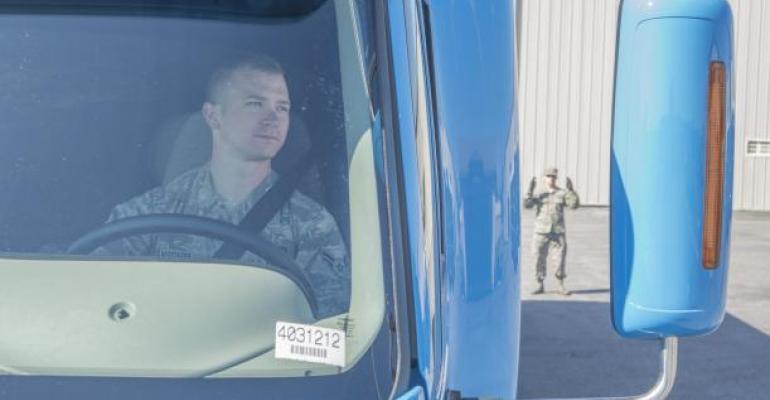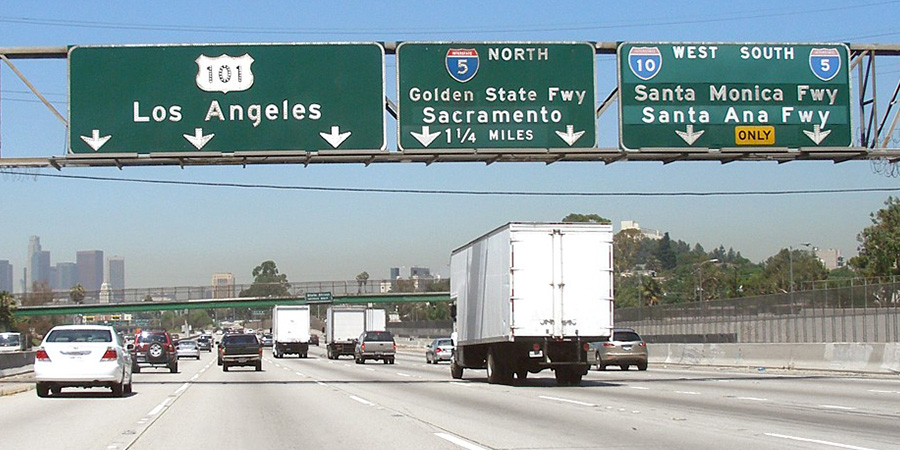Continue reading “FMCSA offers help for young military drivers to find jobs”
Trucker Deaths Continue to Rise
Trucker deaths continue to rise and are at their highest level in more than 30 years, according to data released Tuesday by the National Highway Traffic Safety Administration.
The federal agency said 885 large truck occupants died in 2018. That’s an increase of almost 1 percent compared to the prior year. It is the highest since 1988 when 911 occupants of large trucks died.
Trucking wants to take marijuana head-on
American Trucking Associations is looking to take the lead in how U.S. businesses adapt to legal weed, noting that there is more to learn about its effects. The ATA Board of Directors created new policies this week that calls for a common-sense approach to liberalizing marijuana laws — in the name of safety. And since every state has different cannabis laws, ATA wants the federal government to change its approach.
Trucking Industry Has Become a Top Target of Ransomware Attacks
SAN DIEGO — Transportation is now one of the most cyberattacked industries in the United States, which puts trucking in the crosshairs of hackers, a panel of cybersecurity experts said here during American Trucking Associations’ Management Conference & Exhibition on Oct. 6.
Continue reading “Trucking Industry Has Become a Top Target of Ransomware Attacks”
California Mandates Smog Checks for Heavy-Duty Trucks
Truckers will have to have their rigs smog-checked and certified in order to operate legally in California under a bill signed into law by the state’s governor, Gavin Newsom.
The measure, Senate Bill 210, makes California the first state with a smog-check program for medium- and heavy-duty trucks. It provides the industry a few years of relief before the smog checks begin, though. The estimated startup date for an operational program is 2023.
Continue reading “California Mandates Smog Checks for Heavy-Duty Trucks”
Boost Driver Safety and Your Bottom Line
Many commercial fleets are seeing premium increases for the second or third year in a row, and some have even seen rates double – the direct result of increasingly high legal settlements and skyrocketing auto repairs.1 Fearing loss of profits (or no profit at all), insurance companies are being very selective when it comes to renewals and new quotes. It’s important to work with an insurance broker who understands the market and can advocate on your behalf.
Detention time continues to be a drag on drivers
Continue reading “Detention time continues to be a drag on drivers”
In-cab alert system set up for Colorado Rockies
Pre-pass now alerts drivers of steep grades, runaway truck ramps and winter chain-up sites on I-70.
PrePass, the weigh station bypass, electronic toll payments and safety services platform, wants to help drivers stay alert as they cross the Rockies.
Continue reading “In-cab alert system set up for Colorado Rockies”
WHAT’S BEHIND ALL THE TRUCKING COMPANY CLOSURES?
This has been a tough year for the trucking industry. More than 2,500 truck drivers have lost their jobs in what some are calling a “bloodbath,” primarily affecting smaller companies and owner operators. Pricing pressure is largely to blame, but the underlying cause is less straightforward.
Continue reading “WHAT’S BEHIND ALL THE TRUCKING COMPANY CLOSURES?”
Why the delay in FMCSA’s proposed HOS changes?
Fleet Owner contacted the Federal Motor Carrier Safety Administration (FMCSA) seeking clarity. We were given a contact person to shed light on the situation, left a message, and are waiting to hear back. If we do so, this story will be updated. The public comment period which was set to go through Sept. 16, was based on the July 31 information release, so that will likely be pushed back as well.
Fleet Owner also sought comment from The White House Office of Management and Budget (OMB). In a return email, Chris Jennings, OMB press secretary, wrote that the HOS rules “are currently under review by OIRA (Office of Information and Regulatory Affairs). OMB historically does not comment on rules until review is finalized.”
Two academicians and trucking experts, one an author on the industry and the other with a book in progress, provided their views on the situation.
Steve Viscelli is a Ph.D., sociologist and author of The Big Rig: Trucking & the Decline of the American Dream. He spent over a decade studying the industry and interviewing truckers. He obtained a CDL and drove full-time for six months to experience a driver’s life. He is a Senior Fellow at the Kleinman Center for Energy Policy at the University of Pennsylvania.
“On the other end, we have drivers who a couple weeks ago had never seen the inside of a truck and are now living out of one for weeks at a time working almost continuously until they are exhausted. Developing a single set of rules to make the job safer across that spectrum is complex to say the least. That’s the legitimate challenge of hours of service regulations.
“The second reason is completely different. Huge numbers of hours are still not recorded accurately (non-driving on-duty time). Carriers will continue to build those illegal hours into their process. That is just how the industry has worked for decades. The industry and drivers have for so long disregarded both the letter and the spirit of hours of service that the basic foundation of the system is rotten.
“Tweaking the rules isn’t going to change that. We need to completely rethink HOS and, most importantly, build a system that, rather than imposing simplistic rules, addresses the central importance of the economics of driver pay, experience and safety.”
Karen Levy is an assistant professor of Information Science at Cornell University. She has written about trucking for the L.A. Times and other periodicals and is writing a book called Data Driven: Truckers, Automation, and the New Workplace Surveillance. She has no knowledge of when the new HOS rules will be released but has opinions on what they should contain.
“By all accounts, any HOS reforms need to give truckers the flexibility they need to do their jobs safely and efficiently,” she said. “Truckers have the best and most relevant expertise to structure their work in response to the conditions around them—the weather, the traffic, their fatigue level and physical needs. One-size-fits-all HOS rules are hard for truckers to stomach because they’re inflexible to these variables, especially in the ELD era. Things like eliminating the 30-minute rest break or returning to a split sleeper birth would help truckers adapt the rules to the many contingencies they face on the road.”
In FMCSA’s Advance Notice of Proposed Rulemaking published Aug. 23, 2018, four questions were asked publicly so it could better define what trucking industry stakeholders thought. The more than 5,200 responses are being considered as the DOT prepares its proposals. The questions were:
- Should the agency expand the current 100 air-mile “short-haul” exemption from 12 hours on duty to 14 hours on duty, to be consistent with the workday rules for long-haul truck drivers?
- Is there adequate flexibility in the adverse driving exception that currently expands driving time by up to two hours?
- If the 30-minute rest break after eight hours of driving did not exist, would drivers obtain adequate rest breaks throughout a daily driving period to relieve fatigue?
- Do you have information that would support reinstating the option for splitting up the required 10-hour off-duty rest break for drivers operating trucks with sleeper-berth compartments?
This article was originally published by American Trucker.














